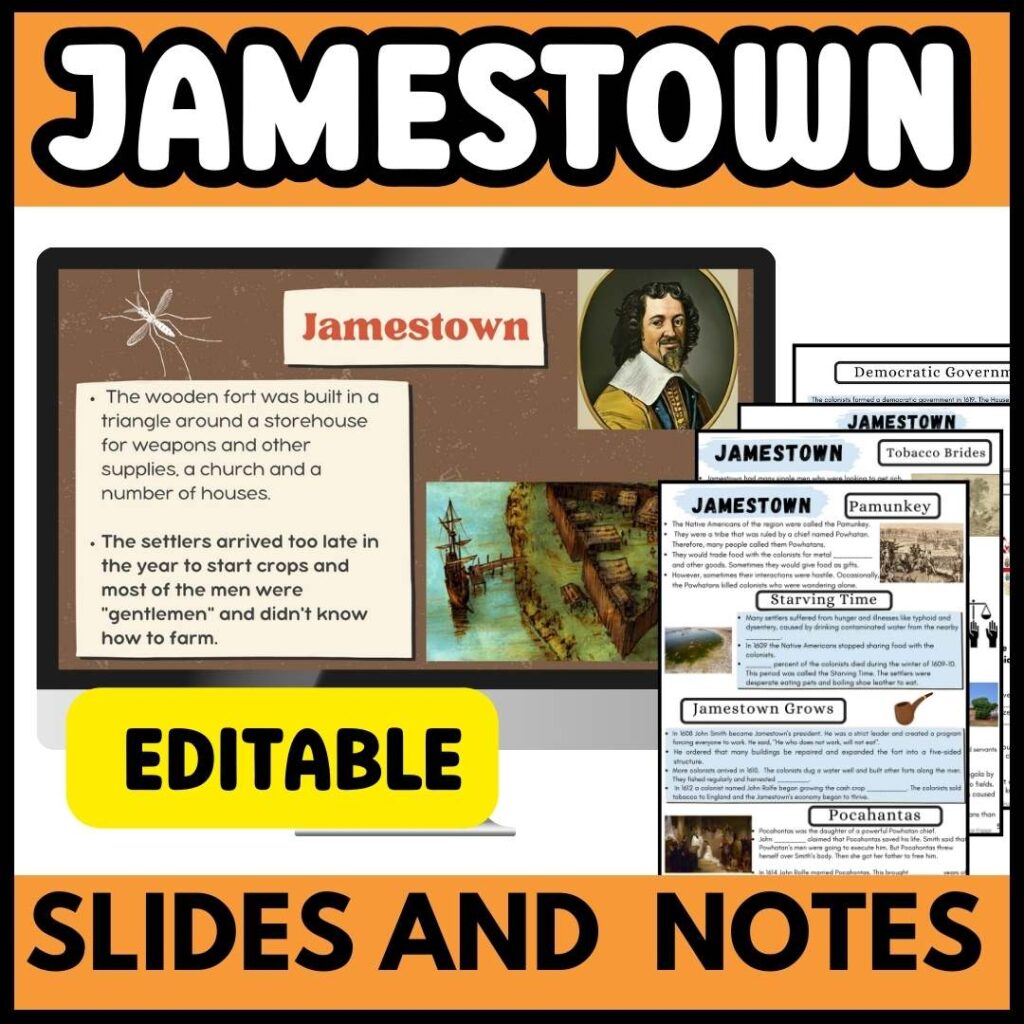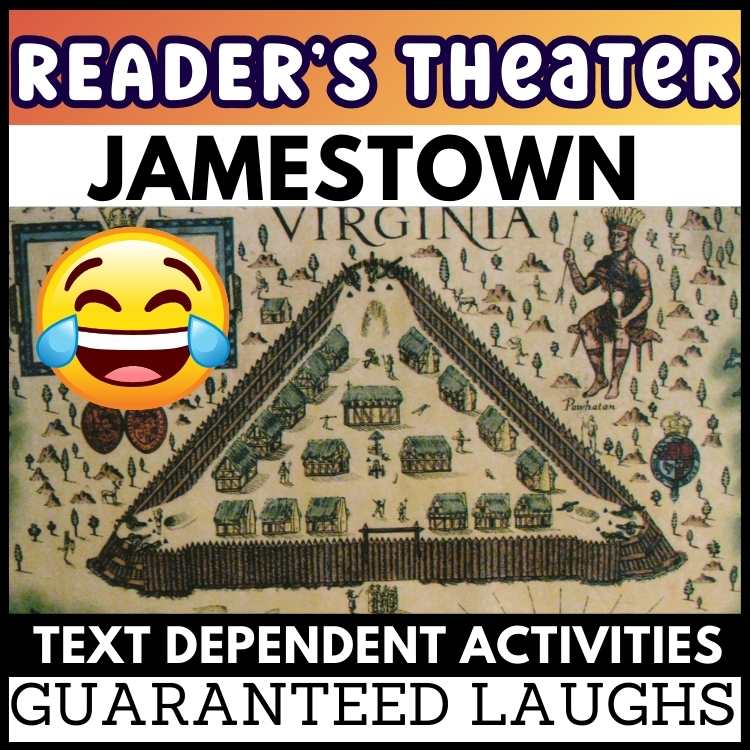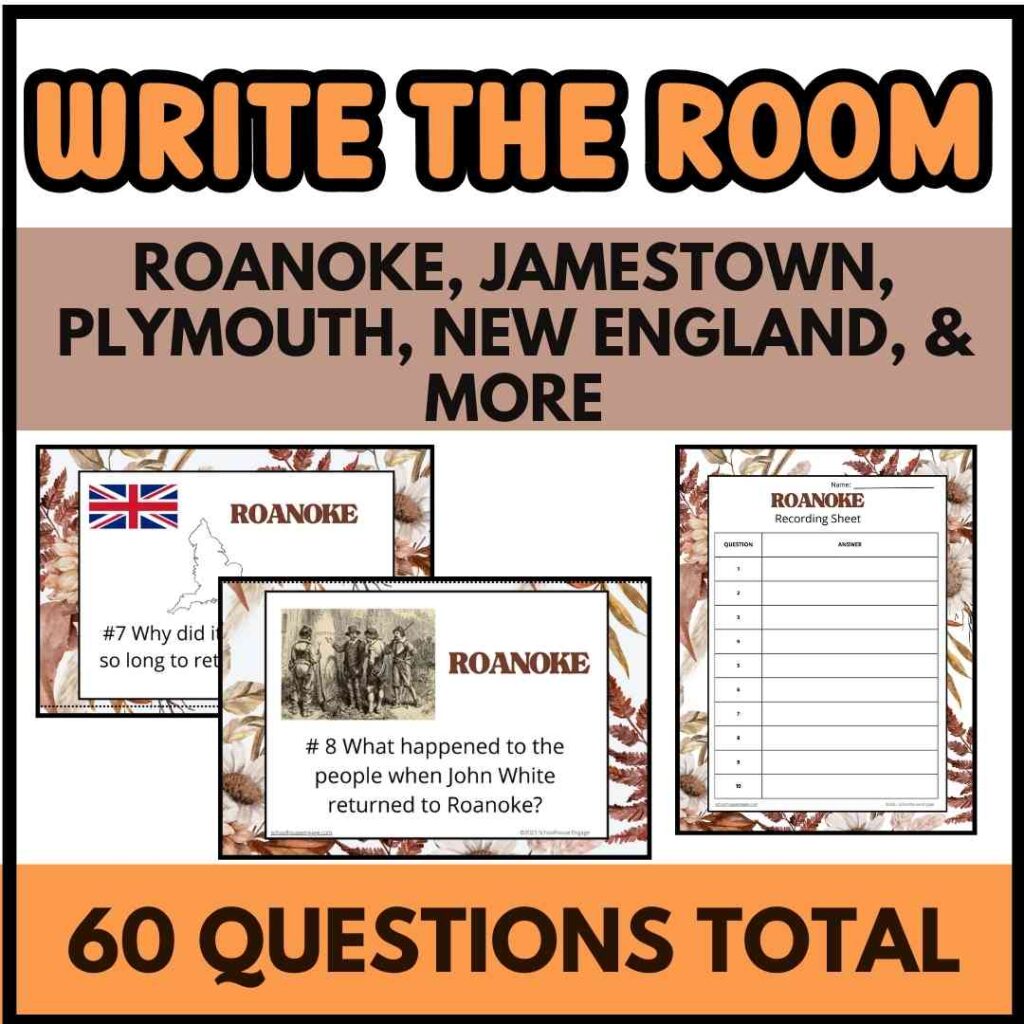Besides the mysterious lost colony of Roanoke, Jamestown is by far the most interesting early colony for students to learn about.
There are so many Social Studies topics to cover in 5th grade, so how do you make the early settlement of Jamestown stand out? The best way is to have your students create a model of the Jamestown fort.

Why Build a Jamestown Fort Model?
Your students will be ecstatic when they hear that they will work in groups to create a Jamestown model.
This project will help your students gain a deeper understanding of:
- The fort’s triangular layout and defensive structures
- The daily lives of settlers and their interactions with Native Americans
- The struggles of early colonists, including disease, starvation, and conflict
- The significance of key sites, such as the church where Pocahontas married John Rolfe
Even if you don’t use a pre-made template, this guide will help you implement a Jamestown project in your classroom. I’ve also included a FREE map and group planning sheet to get you started. See below.
Step-by-Step Guide to Completing the Jamestown Project
1. Organize Student Groups
On Day 1 organize students into groups. It’s best if your students work in groups of 4-5 because there are so many components of the fort that need to be built.
I show my students slides to walk them through what papers and materials they need and what to do.
Your students should decide who is responsible for what and write it down. Each student will complete two to three site replicas. For example, one student will be responsible for recreating the palisade (wooden fence) and the kitchen. Once the work is divided up, they need to read about what they are going to construct.
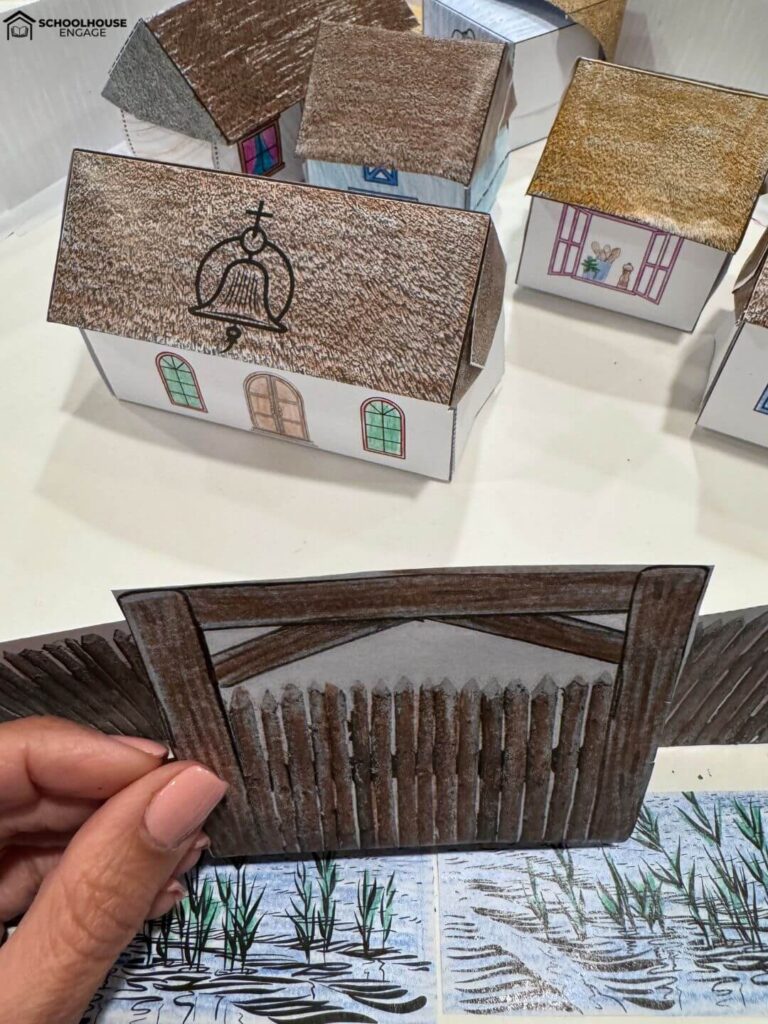
2. Build Background Knowledge
Before you get started, make sure to teach your students how this early settlement got started in the first place.
Jamestown has a long history with a complex relationship with the Powhatan Native Americans. Before students do any reading about Jamestown, front-load the history of Jamestown through a slide presentation with guided or scaffolded notes, which you can find HERE.
Having background knowledge is essential when students are learning about Jamestown. They need to know as much information as possible before they create their Jamestown fort. If not, building the replica can just become a craft activity without true learning.
We also do a Write the Room activity that helps students reinforce what they learned. If you have never heard of the activity, “Write the Room” you can read about it in another blog article I wrote HERE.
In addition, students do a Readers Theater skit about Jamestown. If you have never tried doing Readers Theater in your classroom, you are missing out. I wrote an article you can find HERE about some of the reasons you should incorporate it into your Social Studies curriculum.
3. Research and Share Key Information
The Jamestown website also has great information about how archaeologists made their discoveries about each site.
Your students can read about each site using the virtual tour, but the articles are geared for adult readers and are way too difficult for upper-elementary students (in my case, 5th grade).
You can find kid-friendly articles about each archeological site for students who are reading at an upper elementary reading level HERE.

Once students have read about their sites, they answer a few close reading questions. Then everyone takes turns sharing what they wrote.
During this time, go over the rubric so your students know exactly what is expected.
4. Create the Jamestown Fort Layout
On day two, give each group a poster board and show slides with directions to create the triangle. Then, students add pictures of the river and landscape.
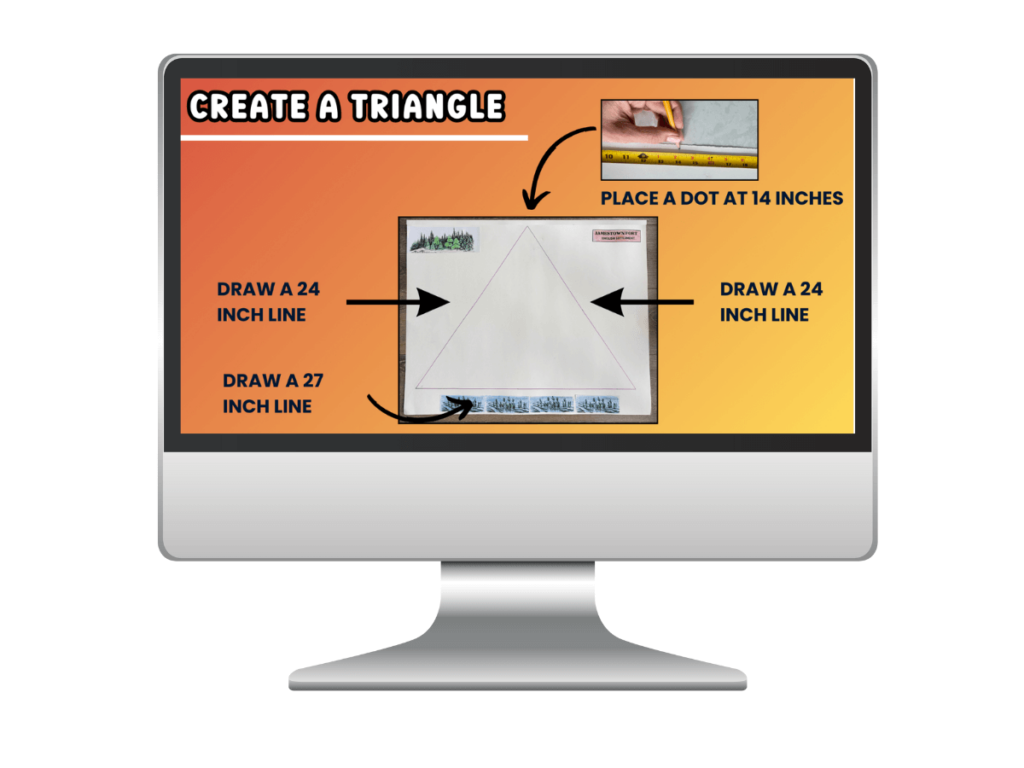
5. Construct the Jamestown Structures
Students now build replicas of key sites. Hand out the templates and show the tutorial video LINK on how to create buildings with roofs. If you decide not to purchase the templates, students can still make paper houses on their own. Give your students creative freedom to color and decorate their structures, or you can use a ready-made template.
Students love doing this project, and they can get detailed with their coloring and designs. If you are pressed for time (who isn’t?), then instruct your students not to color the roof since it already has a texture pattern to it.
All my students opted to color everything. Some of my students drew with markers while others used crayons.
What I like about this project is that some of your early finishers can just continue to add more design details to their project. These students decided to add dry grass and paint with tempera paint.
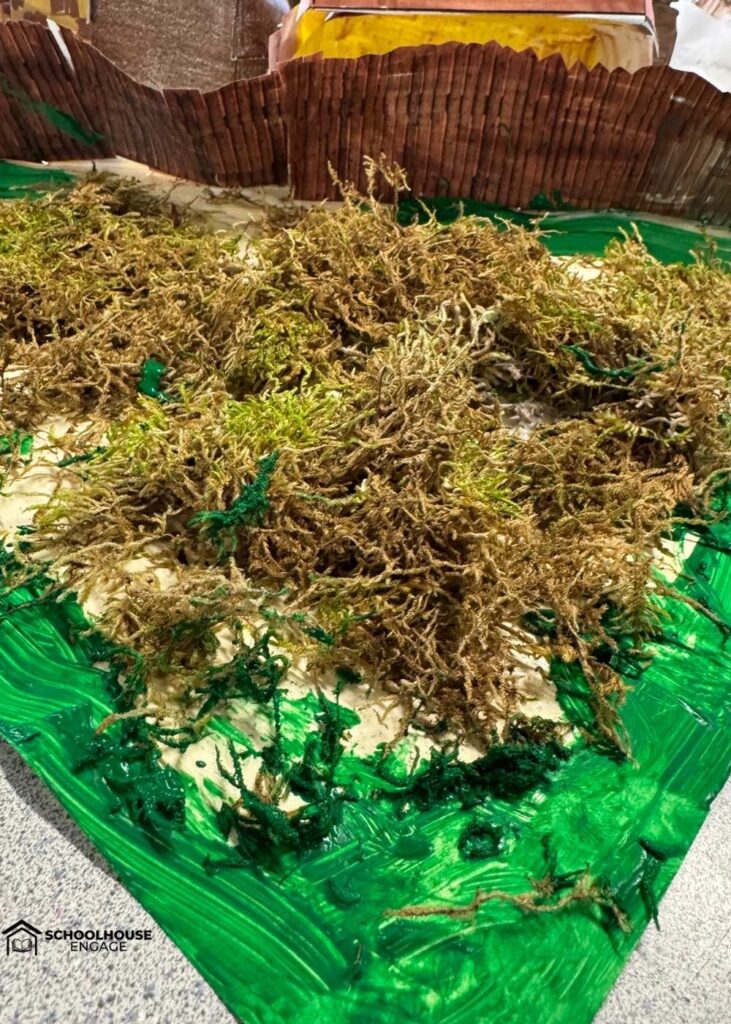
Some of my early finishers and/or overachievers made more structures and added cannons to their palisades.
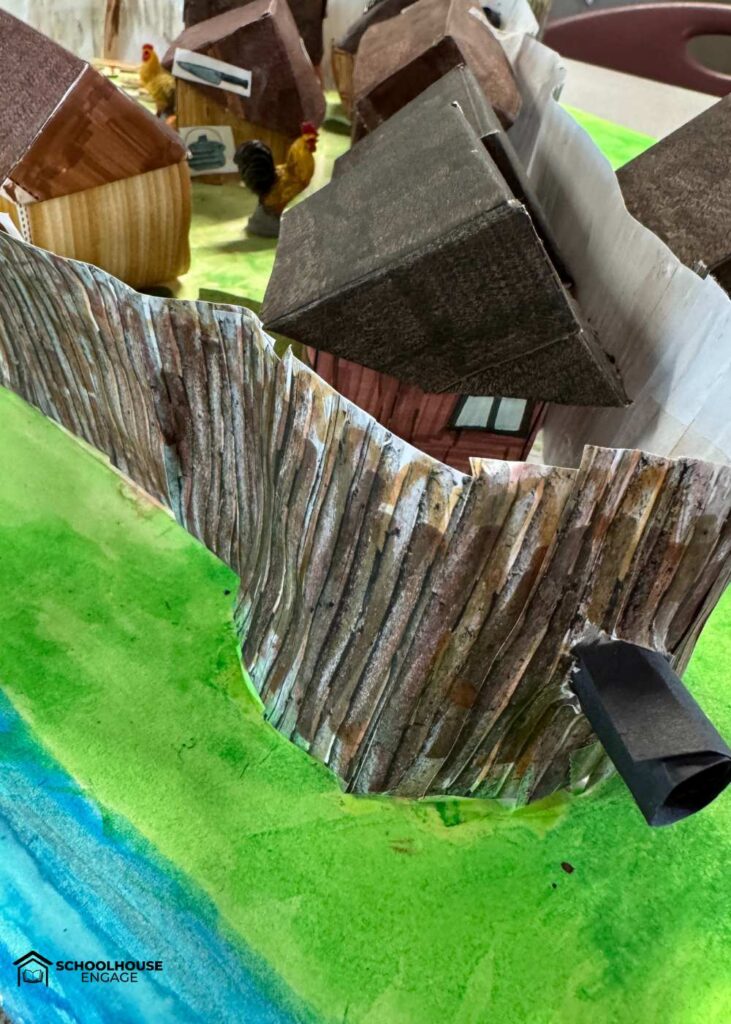
Key Structures to Include:
Jamestown Palisade (Wooden Fence)
Building the wooden fence is important because students will get an idea of how the fort was created in a triangular shape.
Students can create the palisade with a template I created or they can draw it themselves and glue it together. The video below shows exactly how to make the defense wall stay up.
Church
The church is an important part of Jamestown because it is the site where Pocahontas and John Rolfe exchanged their marriage vows.
Their political marriage brought about 7 years of peace between the Powhatans and the colonists.
Burial Ground
The Starving Time was a period in Jamestown when many colonists died.
Recreating a graveyard gives your students a perspective of how many lives were lost to disease and starvation.
Trading Post
Colonists often traded with the Powhatans. The trading post was outside of the fort because the colonists felt it was a safe place to trade with the Powhatans. The Powhatans traded corn and other food items for metal goods and weapons.
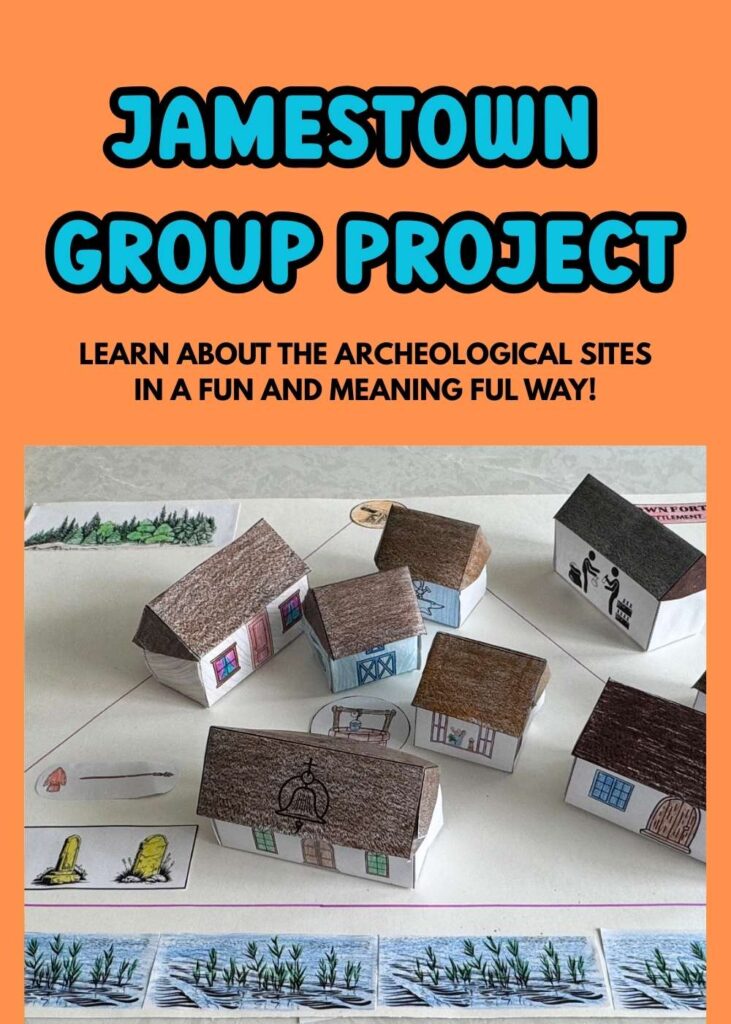
Some of the other sites your students will construct are:
- Blacksmith
- Barracks
- Storehouse
- First Well
- Kitchen
- Church
- Rowhouse
- Merchant’s Warehouse
If you take a look at the official Jamestown website, there are more sites, but my students only read about the eleven sites listed above since it would be too time-consuming to do them all.
6. Place the Structures Using a Map
Once students have constructed their sites, they need to place them in the right spots. They use a kid-friendly map to place the site at its correct location.
7. Add Artifacts for Historical Accuracy
Archaeologists have uncovered hundreds of artifacts from Jamestown. When students are finished building the Jamestown model, they must include artifacts that archaeologists discovered at the sites.
Students read about the artifacts found at each site in the kid-friendly article they are assigned to read.
I ask students to highlight the artifacts found at the site, and then I hand out a PDF of artifact images ( or they can draw them on their own).
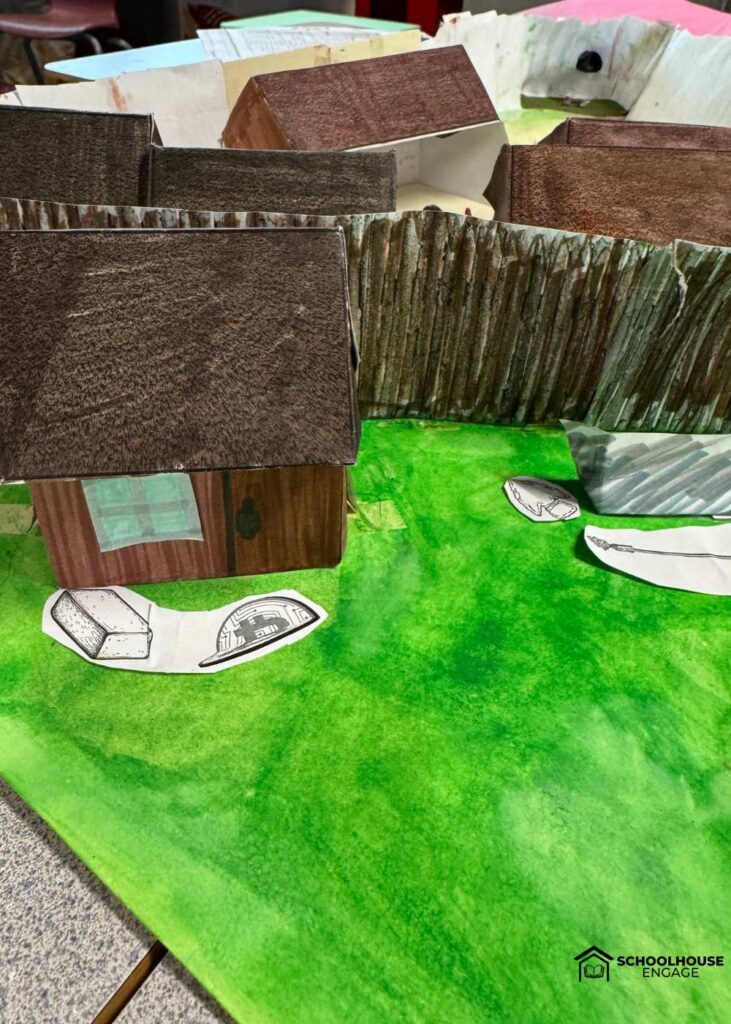
If you are using the artifact PDF page, you can either:
- Have students cut them out, shuffle them, and place them face down
- Students can take turns drawing an artifact image, and as a group, they will decide where the artifact goes.
These students glued their artifacts inside the kitchen site.

This Captain’s leading staff and arrow were found at the burial site.
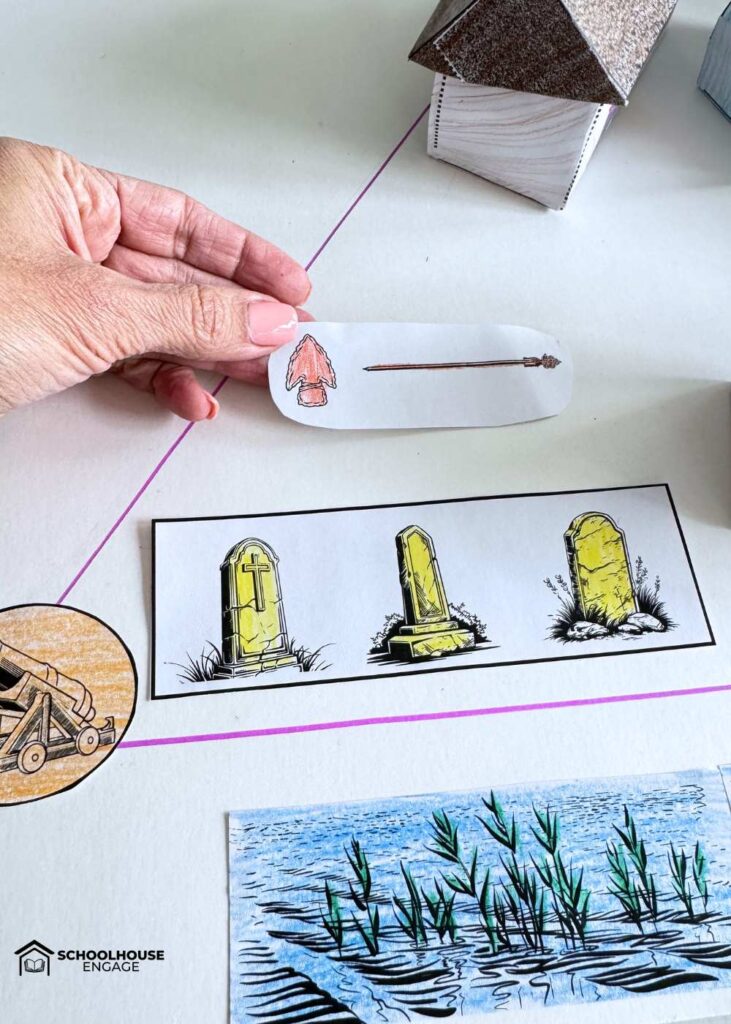
We also take a look at real artifacts found at Jamestown, which I highly encourage you to do. You can explore their artifacts on their website.
Final Steps: Showcasing and Evaluating the Jamestown Fort
Once students have built and decorated their structures and sites, it is time to showcase their hard work. Allow students from other groups to walk around and check out other models. I like doing this because it allows me to walk around with a clipboard and right then and there assign a grade using a simple rubric.
You can recreate this Jamestown model in your classroom with regular posterboard and blank paper by using my FREE Jamestown Sit map and planning sheet. However, if you want to make your life easier and save time, grab the Jamestown Project. if you want the articles with artifacts, you can find them here bundled: Jamestown Model Project and Guided Reading Activities.
Final Thoughts
Building a Jamestown Fort paper model is an engaging way to teach students about early American history. While you can create this project using basic materials, a ready-made Jamestown Model template can simplify the process and make your life easier.
You got this! Giselle


